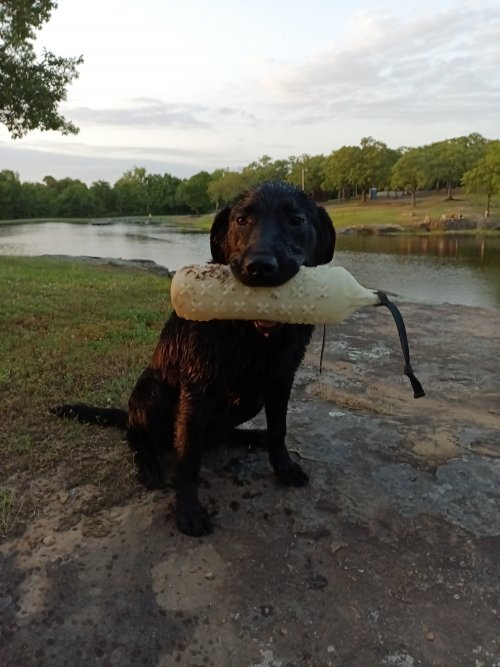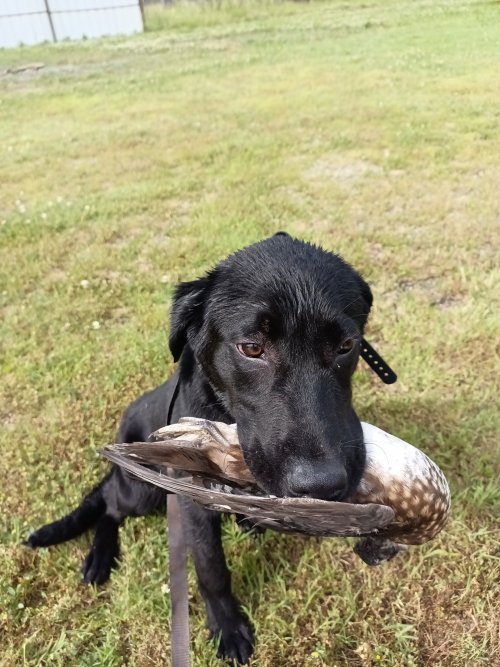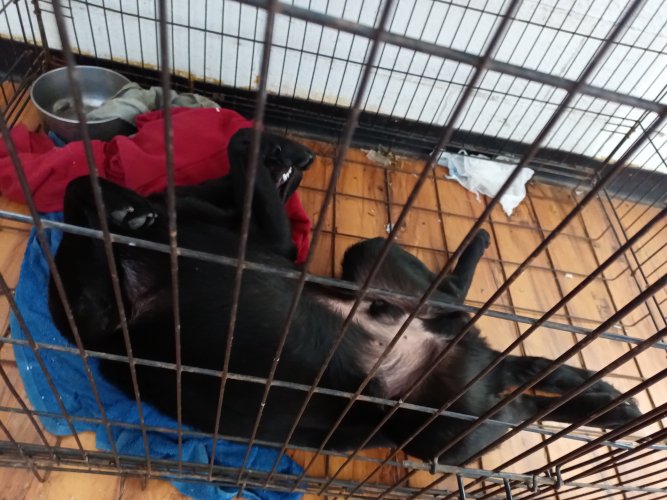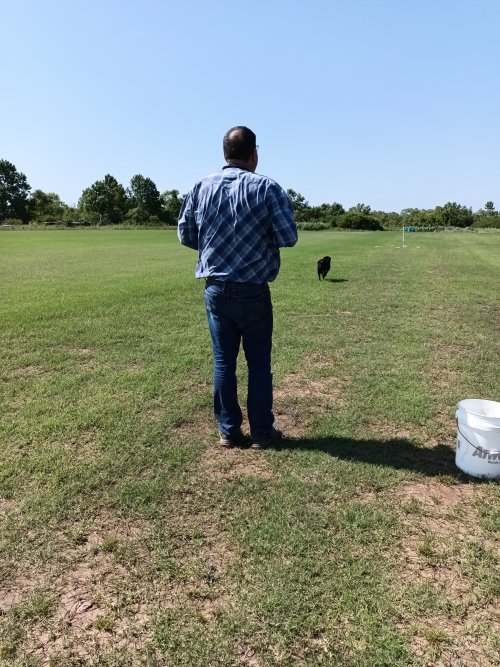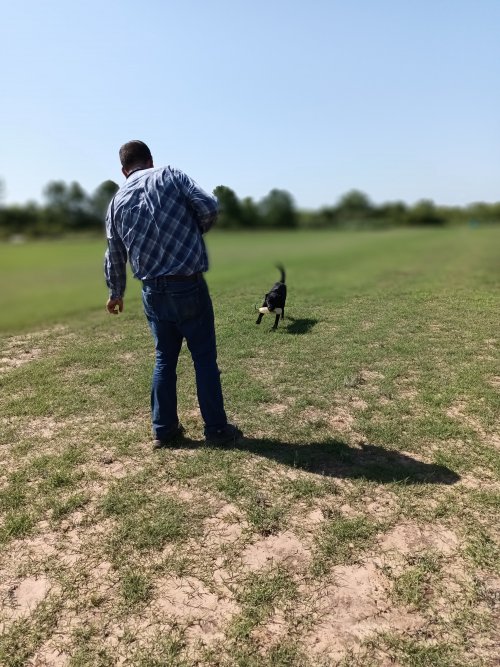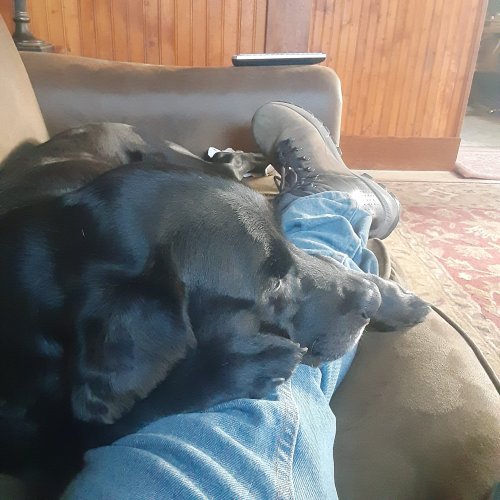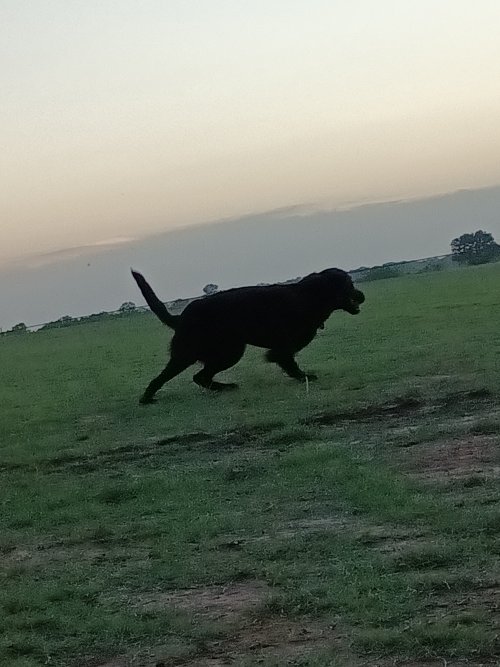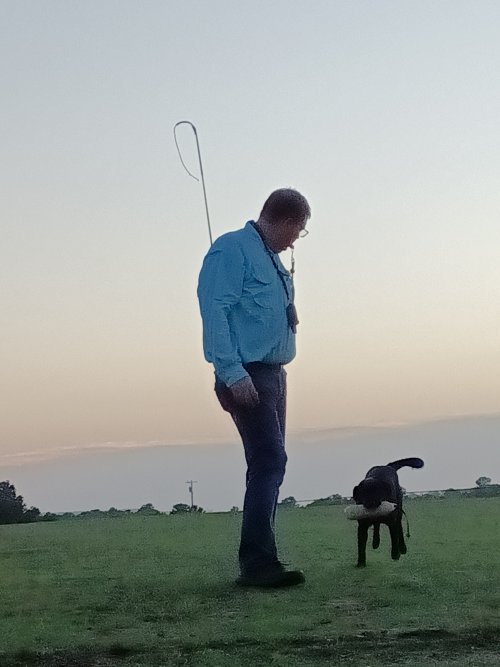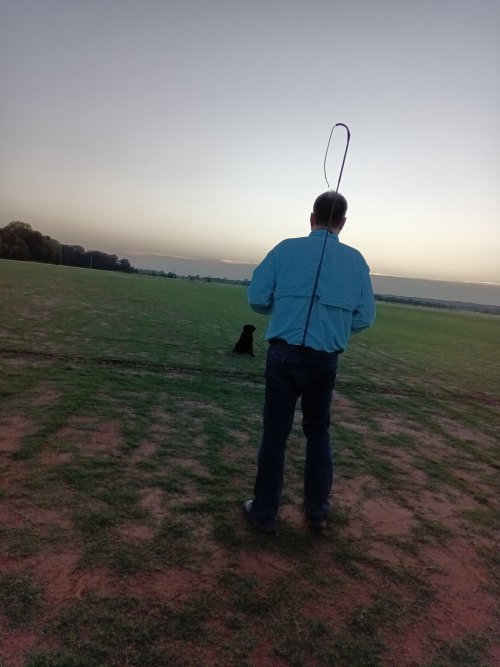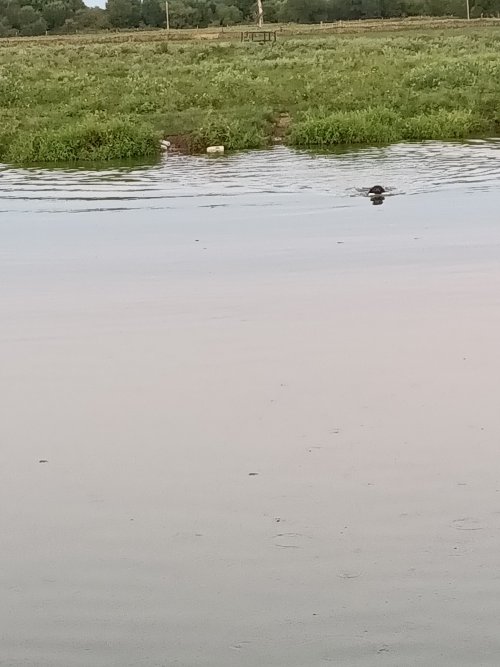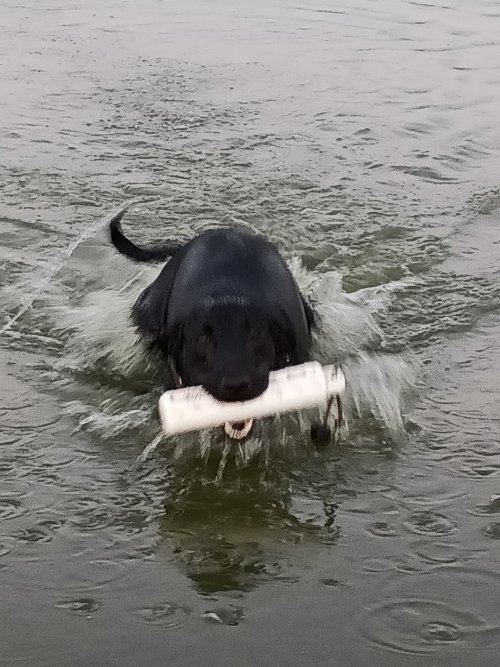okie archer
Well-known member
- Joined
- Feb 3, 2015
- Messages
- 735
I like to wait until about the 6 month mark to begin force fetch. This gives time for the pup to lose baby teeth and grow adult teeth. I try to have obedience (sit, here, heel, kennel, etc.) down solid as well. At the same time try to cultivate the retrieving desire with basic single marks on both land and water. Intro to dead ducks and gun noise as well.
Rex turned 6 months on May 15th so I began force fetch starting with "hold". Hold went super easy as I expected it would because from very early on when he would come back from a retrieve he would not stop the bumper/duck. That made it nice, Rex is the first dog I've ever trained that hold was not a problem teaching. They always want to spit it out.
Next I went to ear pinch on fetch command, that also was learned pretty quick. I personally never use a table because I don't see the point if your eventually going to the ground anyway. To each their own.
I think it was on the third day Rex was already going for the bumper when I stretched my arm out and also picking it up off the ground on around day 3 or 4. He was very compliant and learned quickly how to turn off pressure. By the end of the first week I transferred from ear pinch to e-collar on fetch command. That also was fairly smooth transfer. Next was walking fetch and also transitioned from small 2" bumpers to large 3" bumpers. Walking fetch went pretty good as well. I stayed on it for several days to solidify. Now that I had force fetch in my dog training tool box I started letting him have a few single marks occasionally to keep his attitude up.
At this point everything is rolling pretty smooth so I began force to pile.
FTP started out pretty good but as I increased the distance it became more challenging. One day he got confused and I got agitated and our session nose dived. So I went home and regathered myself and decided to digress a bit and went back to force fetch just a bit then to walking fetch and tried to keep up the good attitude. I really just needed to slow down. Handler attitude is extremely important especially with a young dog in formal training.
I stayed on walking fetch for awhile throwing happy bumpers in between and working on my training attitude which helps his training attitude.
His confidence has really came up good. I started back to pile work yesterday. Started out great but as I increased distance he got confused a bit and lacked confidence. Again I got in a hurry. So I tried to keep things from nose diving and shortened the distance up again to the pile and sent him 2 or 3 more times to regain confidence. In the mornings I usually work on obedience. Walking at heel, push/pull heel work. Cleaning up a sloppy sit. He has already been collar conditioned to here. I taught whistle sit around 3 months but now I am working on sitting him, calling him, and whistle sitting on way to me. That is going pretty good. I like to keep the obedience training separate from pile work etc. to keep things simple when teaching concepts.
My plan now is to work on force to pile at shorter distances until solid then gradually increase distance as to build confidence. Also have some land and water marks at different training sessions. Hopefully by hunting season Rex will be at a senior/seasoned level.
Rex turned 6 months on May 15th so I began force fetch starting with "hold". Hold went super easy as I expected it would because from very early on when he would come back from a retrieve he would not stop the bumper/duck. That made it nice, Rex is the first dog I've ever trained that hold was not a problem teaching. They always want to spit it out.
Next I went to ear pinch on fetch command, that also was learned pretty quick. I personally never use a table because I don't see the point if your eventually going to the ground anyway. To each their own.
I think it was on the third day Rex was already going for the bumper when I stretched my arm out and also picking it up off the ground on around day 3 or 4. He was very compliant and learned quickly how to turn off pressure. By the end of the first week I transferred from ear pinch to e-collar on fetch command. That also was fairly smooth transfer. Next was walking fetch and also transitioned from small 2" bumpers to large 3" bumpers. Walking fetch went pretty good as well. I stayed on it for several days to solidify. Now that I had force fetch in my dog training tool box I started letting him have a few single marks occasionally to keep his attitude up.
At this point everything is rolling pretty smooth so I began force to pile.
FTP started out pretty good but as I increased the distance it became more challenging. One day he got confused and I got agitated and our session nose dived. So I went home and regathered myself and decided to digress a bit and went back to force fetch just a bit then to walking fetch and tried to keep up the good attitude. I really just needed to slow down. Handler attitude is extremely important especially with a young dog in formal training.
I stayed on walking fetch for awhile throwing happy bumpers in between and working on my training attitude which helps his training attitude.
His confidence has really came up good. I started back to pile work yesterday. Started out great but as I increased distance he got confused a bit and lacked confidence. Again I got in a hurry. So I tried to keep things from nose diving and shortened the distance up again to the pile and sent him 2 or 3 more times to regain confidence. In the mornings I usually work on obedience. Walking at heel, push/pull heel work. Cleaning up a sloppy sit. He has already been collar conditioned to here. I taught whistle sit around 3 months but now I am working on sitting him, calling him, and whistle sitting on way to me. That is going pretty good. I like to keep the obedience training separate from pile work etc. to keep things simple when teaching concepts.
My plan now is to work on force to pile at shorter distances until solid then gradually increase distance as to build confidence. Also have some land and water marks at different training sessions. Hopefully by hunting season Rex will be at a senior/seasoned level.




